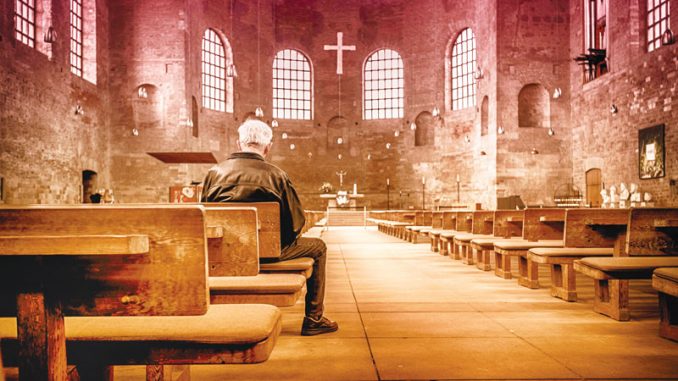
When it comes to defining what faithful Catholics believe and practice, it can be helpful to think about breaking it all down into what can be called “The Three Ds.”
Doctrine, dogma, discipline.
We’ve all heard these words used when learning about different teachings of the Church, but it can be difficult to figure out what exactly they mean. What makes Catholic doctrine different from a dogma, and what makes both of those different from a discipline?
It’s really not as hard as it might seem at first.
Father C. Thomas Miles, judicial vicar for the Diocese of Charleston, offers the following simple definitions.
Doctrine is the broadest term and includes all teachings and beliefs proposed and taught by the Magisterium of the Church. The Magisterium, as a reminder, is the entire teaching authority of the Church itself as handed down through generations. It includes the truths found in Scripture and in Church tradition.
Dogma, meanwhile, is what Father Miles describes as “a subset of doctrine.”
What makes the dogmas different is that they are truths that have been declared to be divinely revealed by the Church’s teaching authority. They are included as part of doctrine, but stand apart from the other doctrines because they have been revealed to man by God and are thus considered infallible.
“All dogmas are infallibly defined,” Father Miles said. “This means that there can be doctrines that are not infallible and thus that are not dogmas.”
One way to think about it: All dogmas are doctrine, but not all doctrines are dogmas.
The Catechism of the Catholic Church describes the special nature of dogmas: “The Church’s Magisterium exercises the authority it holds from Christ to the fullest extent when it defines dogmas, that is, when it proposes, in a form obliging the Christian people to an irrevocable adherence of faith, truths contained in divine Revelation or also when it proposes, in a definitive way, truths having a necessary connection with these.” (88)
The Catechism also offers a description of how the dogmas can help the faithful develop in their spiritual life and relationship with Christ himself: “There is an organic connection between our spiritual life and the dogmas. Dogmas are lights along the path of faith; they illuminate it and make it secure.” (89)
There are many dogmas of the Church, most proclaimed during early ecumenical councils which helped to form the very bedrock of the faith itself. These dogmas include belief in the divinity of Christ; His incarnation, death and resurrection; the Holy Trinity, and other basic truths of the faith that we reinforce when we say the Apostle’s Creed.
There are also more recent dogmas which have been proclaimed by popes. In 1854, Pope Pius IX pronounced the dogma of the Immaculate Conception; and in 1950, Pope Pius XII declared the assumption of the Blessed Mother to be a dogma.
And then there’s the third “D.” Discipline.
A discipline is a rule, practice or regulation set down by Church authorities as a guide for the faithful and for the life of the Church as a whole. Disciplines, unlike doctrine and dogmas, also can be subject to change by Church authorities.
In a nutshell, doctrine and dogma are words that define what Catholics believe. Discipline deals with how the faith is practiced on a daily basis.
A good example of a discipline is the custom of abstaining from meat on Fridays during Lent. Prior to the 1960s, the hard and fast rule observed by Catholics in the United States was that meat could not be eaten on any Friday during the year at the risk of committing a mortal sin. In 1966, the United States Conference of Catholic Bishops changed the practice and instead declared that Catholics over the age of 14 should abstain from meat on Fridays during Lent.
